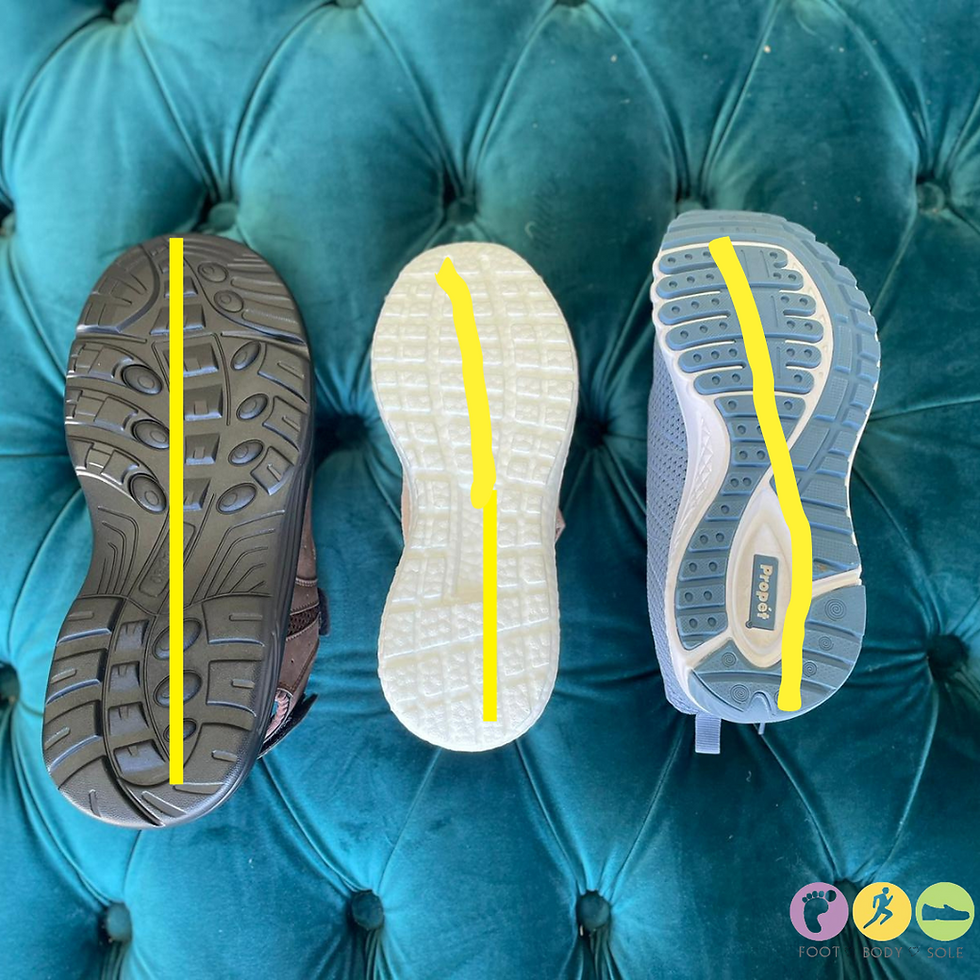Ingrown Toenails
- Foot Body Sole
- May 22, 2019
- 3 min read

WHAT IS AN INGROWN TOENAIL?
Ingrown toenails are a common problem seen at our clinic and they can be extremely painful and debilitating.
An ingrown toenail (also known as onychocryptosis) occurs when the nail grows into the skin on either side of the nail. It most commonly occurs on the big toenails, however can occur on any nail. If left untreated or treated incorrectly, it can become infected and be very painful when wearing shoes or even when the bedsheet lightly touches the area at night.
HOW DOES AN INGROWN TOENAIL OCCUR ?
There are many ways an ingrown toenail can occur. These include:
· Improper cutting techniques – cutting the nails too short or too far into the sulci, or leaving a nail spike in the sulcus.
· Trauma to the nail including stubbing your toe, dropping something onto the nail etc– this can alter the shape of the nail and cause it to grow in a different direction.
· Natural position of the nail – unfortunately some people have a genetic predisposition to have ingrown toenails. If your parents or grandparents have suffered with ingrown nails, there is a chance you can be affected too.
· Incorrect footwear – shoes that are too narrow can compress the toes, forcing the nails to push into the skin
· Picking at the sides of the nail causing trauma to the sulci
WHAT TREATMENT OPTIONS ARE AVAILABLE?
Thankfully, there are numerous treatment options available for ingrown toenails.

SEE A PODIATRIST FOR GENERAL NAIL CARE: We as podiatrists are specialists in treating ingrown nails. We are trained on appropriate nail cutting techniques and can provide instant relief in most cases. We can also identify any potential problems with nails and treat them before they become a problem. Often, there is also a build up of skin known as hyperkeratosis in the nail sulcus as a result of the increased pressure caused by the nail. We are able to carefully and effectively remove this as well.
PLACING FOAM UNDER THE NAIL: This treatment is very effective in lifting the nail plate from the nail bed to stop it from digging into the skin. It acts as a barrier between the nail and the skin and, once inserted into the nail sulcus, can also provide immediate relief.
TAPING TECHNIQUES: Tape can be applied to the end of the nail and surrounding skin in order to pull the skin away from the nail to reduce discomfort. This can also provide immediate relief.
CONSULT YOUR GP FOR ANTIBIOTICS: If we believe that there is an infection present due to an ingrown toenail, we may ask you to see your GP for a prescription of antibiotic. Signs of infection include redness, swelling, pain and pus.
NAIL SURGERY: This option is for severe ingrown nail cases where we believe that other treatments will not relieve your pain. This involves injecting a small amount of local anaesthetic into your toe and removing the section of nail that is ingrown. A chemical called phenol is then applied to the site to prevent the nail from growing back.

TOP TIPS TO AVOID AN INGROWN TOENAIL
Ensure you are cutting your nails regularly and in a straight line, do not cut deep into the corners.
Ensure your footwear is appropriate – there should be enough room in the toe box of the shoe to be able to wriggle your toes slightly.
Do not pick at the nail or the skin surrounding the nail
If you think you may have an ingrown toenail, see a podiatrist sooner rather than later for treatment.
If you or someone you know is suffering from ingrown toenails, come in and see us here at Foot Body Sole! CLICK below to make a booking or call 1800 778 316









Comments